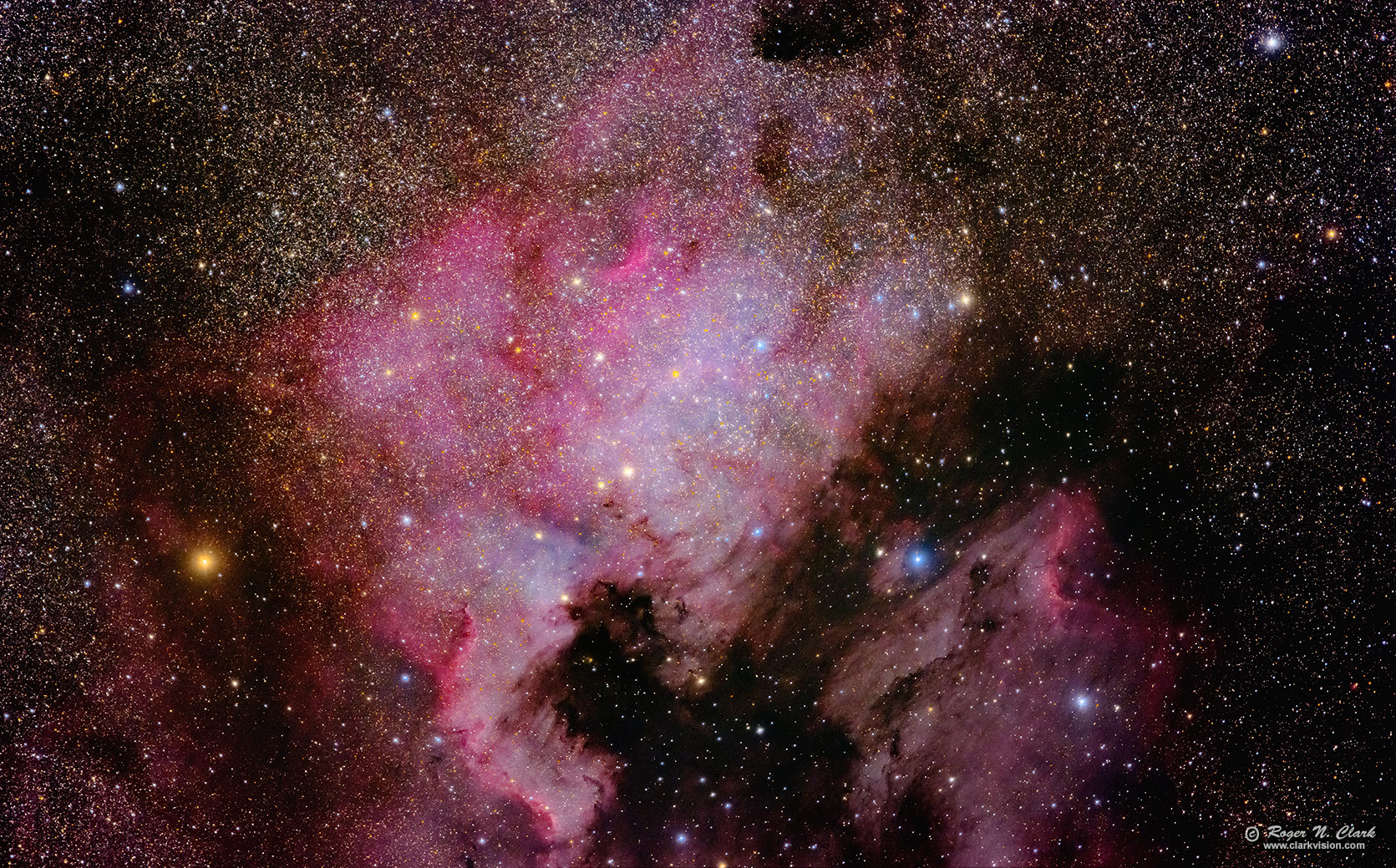| Home | Galleries | Articles | Reviews | Best Gear | New | About | Contact | Gallery Index | Previous |
Next |

| Home | Galleries | Articles | Reviews | Best Gear | New | About | Contact | Gallery Index | Previous |
Next |

The North America Nebula, is an emission nebula in the Constellation Cygnus. It is visible in small amateur telescopes, and binoculars from dark skies. The Pelican nebula is to the right of the North America Nebula and is much fainter. The North America and Pelican Nebulae are about 1600 light years from us and are part of the same cloud, separated by a dark band of interstellar dust.
The pink color is emission from Hydrogen (H-alpha in the red, and H-beta plus H-gamma in the blue). The blue color appears to be a combination of Oxygen emission in the blue green plus continuum reflection from fine dust particles, and Helium plus Nitrogen emission in the blue,
The image is a good illustration of the mix of colors of stars in our galaxy: a few blue stars more white stars and most stars are yellow, orange and red.
Technical. This image was obtained with a stock Canon EOS 90D DSLR Camera and a Canon 300 mm f/2.8 L IS II lens Total exposure time was 29.5 minutes (fifty-nine 30-second exposures) at ISO 1600. This is a natural color image. Post processing: raw conversion with Photoshop ACR (normally I would use rawtherapee, but the color matrix correction in rawtherapee did not do well with the emission), stacking with deep sky stacker, Stretched with rnc-color-stretch, and final adjustments in photoshop. No darks, no flats, no bias frames (flat field is in the ACR lens profile and corrected during raw conversion, bias is in the EXIF data). The exposures were tracked on a Fornax Lighttrack II with no guiding. This is the full frame image at 1/4 resolution (8.8 arc-seconds / pixel).
This is a natural color image.
The Exposure Factors, CEF, CEFA are measures of the relative amounts of light received from a subject. It can be used to fairly compare wildly different lens/telescope apertures and exposure times. For this image on the sky:
Modern digital cameras like the Canon 90D include on sensor dark current suppression technology and low fixed pattern noise at ISOs around 800 and higher, making no need for dark frame subtraction. Modern raw converters correct for light fall-off and also correct for hot/dead/stuck pixels. Bias is a single value found in the EXIF data. This makes processing low light images easy: simply align and average.
Also see Astrophotography Image Processing Basic Work Flow.
To learn how to obtain stunning images like this, please visit my Extensive Articles on Photography .
Keywords to this image = astrophoto-1 nebula low-light digital_astro canon_90d rnc-color-stretch
Image ID: north-america-ngc7000-rnclark-c076.26.2022-IMG1516-74-av59.h-0.25xs.jpg
| Home | Galleries | Articles | Reviews | Best Gear | Science | New | About | Contact |
Last updated November 03, 2025